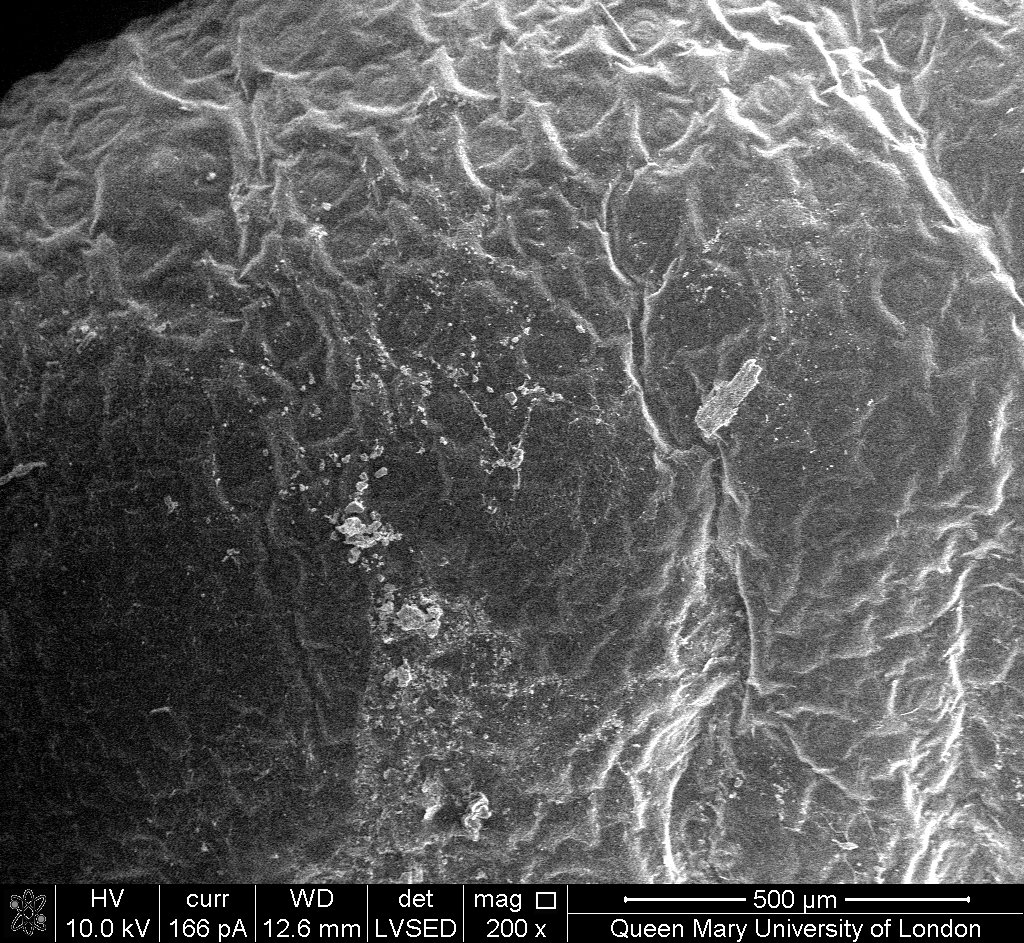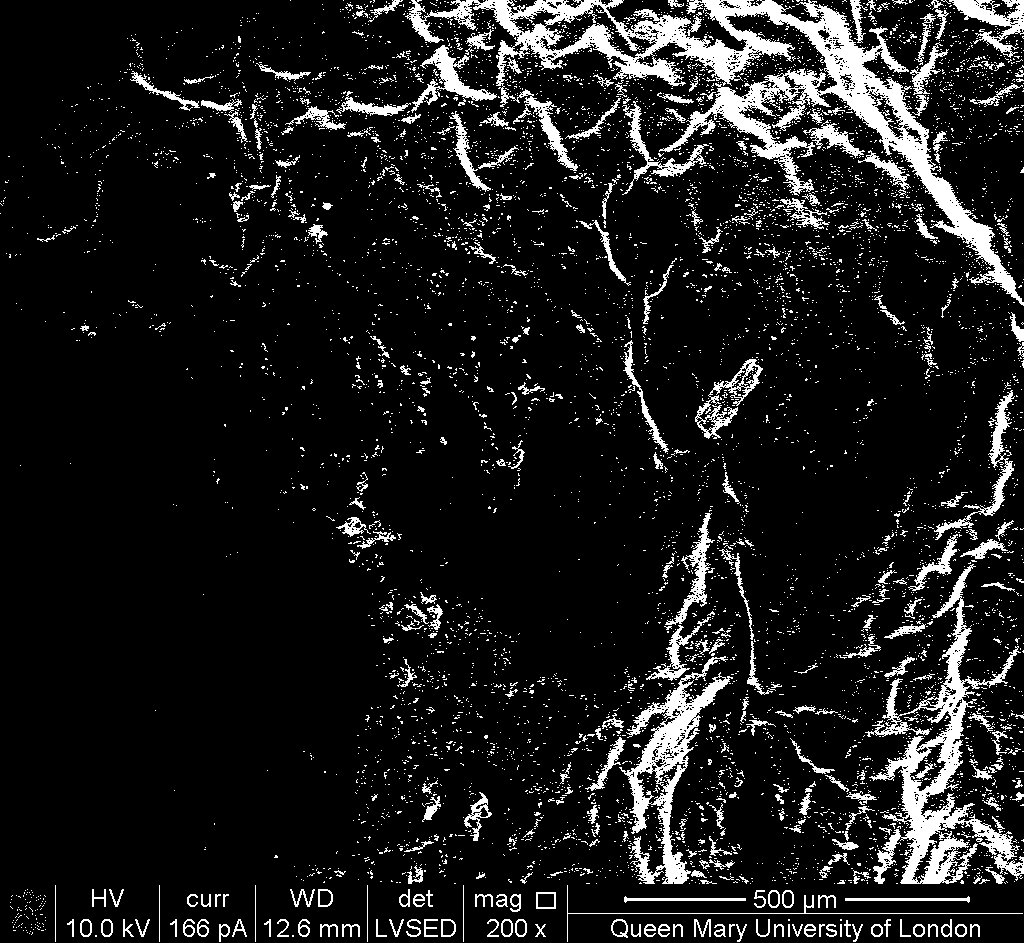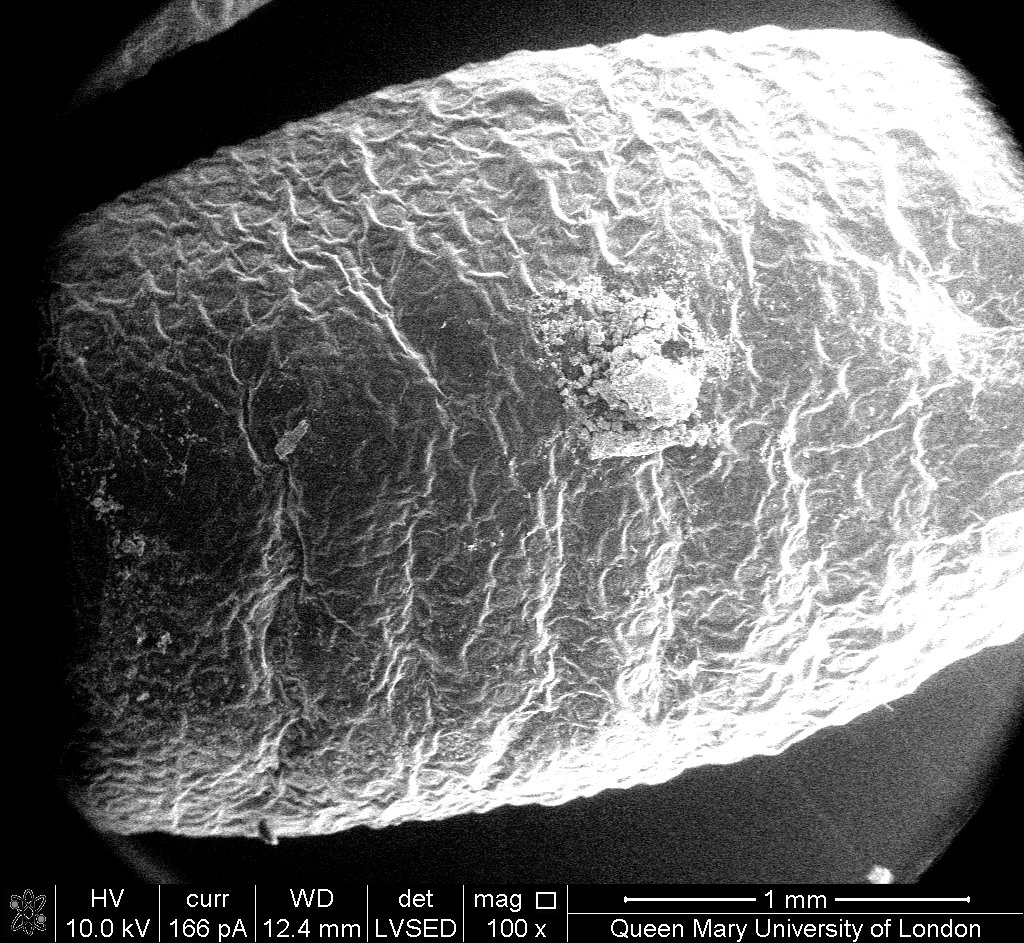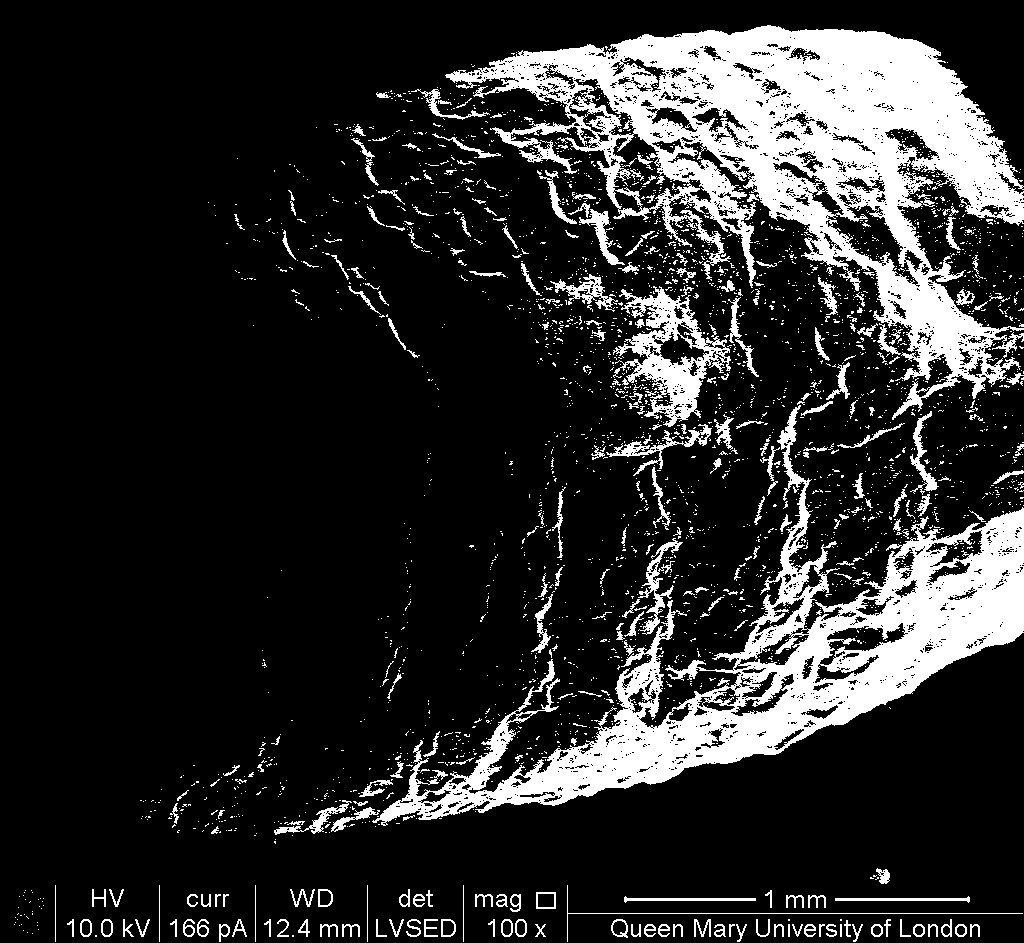Shadows, leaf morphology problem
Shadows, leaf morphology problem
|
Hi there,
I hope someone can help. I am carrying out my undergraduate dissertation on pollution on certain leaves. I have used an environmental scanning electron microscope to take photos of the particles at various magnifications. I want to count particles of certain size fractions (all below 10um) and hence use the threshold function to count particles. However, the morphology of the leaf is problematic. Ridges and dips are appearing as white/black and are hence being counted in particle analyzer. I am using a method similar to Ottele et al. (2012) http://www.sciencedirect.com/science/article/pii/S0925857409001098 but my images are not as simple as these produced in the paper. Would anyone know what I need to try? Thanks so much In advance! |
Re: Shadows, leaf morphology problem
|
You can easily set the size threshold when you do AnalyzeParticles in
ImageJ. The real quesiton is how do you best pre-process the image such that it makes the particles better discernable, which is pretty much the central problem in digital image processing in general. Can you send an example image directly so that we can have a look? On Thu, Dec 12, 2013 at 2:29 PM, Leaf Pollution <[hidden email] > wrote: > Hi there, > > I hope someone can help. I am carrying out my undergraduate dissertation on > pollution on certain leaves. I have used an environmental scanning electron > microscope to take photos of the particles at various magnifications. I > want > to count particles of certain size fractions (all below 10um) and hence use > the threshold function to count particles. However, the morphology of the > leaf is problematic. Ridges and dips are appearing as white/black and are > hence being counted in particle analyzer. I am using a method similar to > Ottele et al. (2012) > http://www.sciencedirect.com/science/article/pii/S0925857409001098 but my > images are not as simple as these produced in the paper. Would anyone know > what I need to try? > > Thanks so much In advance! > > > > > -- > View this message in context: > http://imagej.1557.x6.nabble.com/Shadows-leaf-morphology-problem-tp5005891.html > Sent from the ImageJ mailing list archive at Nabble.com. > > -- > ImageJ mailing list: http://imagej.nih.gov/ij/list.html > -- ImageJ mailing list: http://imagej.nih.gov/ij/list.html |
Re: Shadows, leaf morphology problem
  Another problem occuring is with the brightness created from the ESEM- seen on the third image, the thresholding is ineffective and particles cannot be distinguished (image 4) Thanks for your help.  
|
Re: Shadows, leaf morphology problem
|
A good first approach would be to try an auto-local threshold, which will
be able to handle the contrast disparity. http://fiji.sc/Auto_Local_Threshold If you have imageJ 1.48, this might already be in your threshold settings. Try out the 3x3 plot as shown in the link and see if any of the methods give you the image you want. If not, then it becomes more tricky. On Thu, Dec 12, 2013 at 4:06 PM, Leaf Pollution <[hidden email] > wrote: > <http://imagej.1557.x6.nabble.com/file/n5005893/s.acre_200_%282%29.jpg> > <http://imagej.1557.x6.nabble.com/file/n5005893/thresholded_s.acre_200.jpg > > > > Another problem occuring is with the brightness created from the ESEM- seen > on the third image, the thresholding is ineffective and particles cannot be > distinguished (image 4) > > Thanks for your help. > > > > <http://imagej.1557.x6.nabble.com/file/n5005893/S.acre_100.jpg> > <http://imagej.1557.x6.nabble.com/file/n5005893/S.acre_100_thresholded.jpg > > > > > > -- > View this message in context: > http://imagej.1557.x6.nabble.com/Shadows-leaf-morphology-problem-tp5005891p5005893.html > Sent from the ImageJ mailing list archive at Nabble.com. > > -- > ImageJ mailing list: http://imagej.nih.gov/ij/list.html > -- ImageJ mailing list: http://imagej.nih.gov/ij/list.html |
Re: Shadows, leaf morphology problem
|
Since you know the maximum size of the particles you wish to analyse, you
can also try some form of morphological filtering. Give a try to the "Granulometric filtering plugin" by Dimiter Prodanov ( http://rsbweb.nih.gov/ij/plugins/gran-filter.html). If it doesn't work for you , you can try Top-Hat opening by reconstruction: 1. Run a small size median filter (2.0) to get rid of the noise 2. Run a Minimum filter on your image with size corresponding to the biggest particles you want to keep.(this way you get rid of the bigger particles, but it also degrades the image). 3. Reconstruct the Filtered image (using Greyscale reconstruct from Landini's Morphological plugins set ( http://www.dentistry.bham.ac.uk/landinig/software/software.html) with mask the original image and seed the Minimum filtered image. Now you have a representation of your background. (original picture but just without the particles) 4. Run if necessary a median filter (2.0) on the reconstructed background to get rid of noise. 5. Subtract the Reconstructed background image from your original (median filtered) image. Now this leaves only the particles of the size you need and a small part of the ridges. You can get rid off the latter adjusting the conditions of the Particle analyzer - Size and/or circularity. If this approach works for you, there is a ready to use macro in Gabriel Landini's "Morphological Operators for ImageJ" set (Top-Hat opening by reconstruction) . --- Dr. Stoyan P. Pavlov, MD, PhD Departament of Anatomy, Histology and Embryology Medical University "Prof. Dr. Paraskev Stoyanov", Varna Prof. Marin Drinov Str.55 9002 Varna Bulgaria Tel: +359 (0) 52 - 677 - 052 e-mail: [hidden email] [hidden email] Zentrum für Anatomie Uniklinik Köln [hidden email] Tel: +49221/478-5730 2013/12/12 Adam Hughes <[hidden email]> > A good first approach would be to try an auto-local threshold, which will > be able to handle the contrast disparity. > > http://fiji.sc/Auto_Local_Threshold > > If you have imageJ 1.48, this might already be in your threshold settings. > > Try out the 3x3 plot as shown in the link and see if any of the methods > give you the image you want. If not, then it becomes more tricky. > > > On Thu, Dec 12, 2013 at 4:06 PM, Leaf Pollution < > [hidden email] > > wrote: > > > <http://imagej.1557.x6.nabble.com/file/n5005893/s.acre_200_%282%29.jpg> > > < > http://imagej.1557.x6.nabble.com/file/n5005893/thresholded_s.acre_200.jpg > > > > > > > Another problem occuring is with the brightness created from the ESEM- > seen > > on the third image, the thresholding is ineffective and particles cannot > be > > distinguished (image 4) > > > > Thanks for your help. > > > > > > > > <http://imagej.1557.x6.nabble.com/file/n5005893/S.acre_100.jpg> > > < > http://imagej.1557.x6.nabble.com/file/n5005893/S.acre_100_thresholded.jpg > > > > > > > > > > > -- > > View this message in context: > > > http://imagej.1557.x6.nabble.com/Shadows-leaf-morphology-problem-tp5005891p5005893.html > > Sent from the ImageJ mailing list archive at Nabble.com. > > > > -- > > ImageJ mailing list: http://imagej.nih.gov/ij/list.html > > > > -- > ImageJ mailing list: http://imagej.nih.gov/ij/list.html > -- ImageJ mailing list: http://imagej.nih.gov/ij/list.html |
Re: Shadows, leaf morphology problem
|
Thank you, this has helped somewhat. I have attached the product after subtracting the reconstruction from the original image but it is not picking up some parts and it is not as clear... What would be the best part of the procedure to adjust? Perhaps the median filter?
Thanks 
|
«
Return to ImageJ
|
1 view|%1 views
| Free forum by Nabble | Edit this page |

